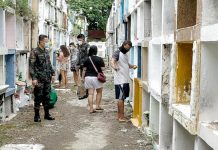
AT SUBIC Bay, a planned United States factory where missiles and drones would be assembled and ammunitions produced is feared to return Olongapo City to infamy as the sex-abuse capital of the Philippines.
The 1987 Philippine Constitution bans the presence of US military bases or installations on Philippine soil unless approved in a treaty between Manila and Washington — or any other nation, for that matter. That came about because of an eight-year campaign to close the US bases and convert these into economic zones, one that this writer was instrumental in starting in 1983 with a dramatic news headline.
This came about because of the campaign of the Preda Foundation to get justice for 12 children sexually abused by US serviceman Daniel Dougherty and other American child abusers.
Dougherty was later found guilty in a US court-martial in Guam. Preda’s campaign was to create awareness and public pressure to free the hundreds of women and children enslaved in the Olongapo and Angeles City sex industry. They were held in sexual servitude by the chains of debt bondage to the bar and brothel owners.
The Olongapo City authorities then were very displeased with Preda’s opposition to the sex industry and child sexual abuse by US sailors and others. For them it was normal. The authorities then announced a plan to close the Preda children’s home.
During a press conference, I was asked about that threat.
“It would be better to close the US military bases and the bars, and convert them into economic zones,” I replied.
The journalist asked: “Is that the new Preda campaign for the future?”
I thought about that and answered, “Yes, it is. You can publish that.”
Headlines followed, announcing the campaign to close and convert the US bases into economic zones.
Closing them was unthinkable at the time. I wrote columns about a six-point military base conversion proposal, and I was invited as a consultant to the bases conversion board headed by Jose Abueva.
Now, a monument stands in the shadow of a huge Philippine flag on the Subic Bay waterfront, just meters from the former command center of the US admiral. The monument celebrates the votes of the 12 senators that closed the US bases on Sept. 16, 1991, by rejecting a renewal of the treaty with the US for the retention of the Subic Bay naval station and Cubi Point naval air station.
The Subic Bay monument shows excerpts of the speeches and the 12 hands of the renewal-opposing senators. That was a proud day for the Philippines when it finally shook off the grip of a foreign power that once had a mighty colonial and military presence in the nation since 1898. (To be continued)/PN







